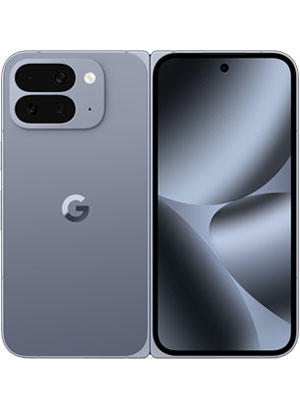With the Pixel 10 Pro Fold, Google has delivered a foldable that balances refinement with ambition. The new device builds on last year’s model but integrates key upgrades—like full IP68 durability, on-device AI tricks, and magnetic charging accessories—while largely retaining a familiar design. In this review, we break down what works, what doesn’t, and whether this foldable can finally live up to Google’s lofty ambitions.
Context: Google’s Foldable Journey so Far
Google first ventured into foldables with the Pixel Fold, but that device showed clear early-generation tradeoffs in hinge strength, software adaptation, and durability. The Pixel 9 Pro Fold improved on those fronts, offering a more stable hinge and more polished foldable software. However, critics still flagged issues around dust ingress, creasing, and unfinished UI optimizations.
The Pixel 10 lineup as a whole also introduced Google’s new Tensor G5 chip and pushed further into AI features and internal refinements (while retiring the physical SIM slot in many markets). That sets the stage for the 10 Pro Fold: it isn’t a reinvention, but it must be a meaningful step forward to earn its price tag.

What’s New & Key Improvements
Durability & Build
One of the biggest upgrades in the 10 Pro Fold is its certification to IP68 standards—making it Google’s first foldable that is officially dustproof and water resistant. This is no small feat for a device with a flexible hinge and internal fold, and marks a milestone in foldable engineering.
Google also revamped the hinge mechanism with a gearless, fully sealed design to reduce entry points for debris. In many hands-on tests, the device resisted sand and water exposure better than previous models, although long-term resilience remains to be seen.
Visually and dimensionally, the device hews closely to its predecessor: it folds to a relatively compact form, with flat edges, rounded corners, and a slimmer profile than before. Internally, the fold-out display stretches to 8 inches (LTPO OLED, 120 Hz), while the outer “cover” display measures about 6.4 inches.
Performance & AI Features
Under the hood sits the Tensor G5, paired with 16 GB of RAM and storage options up to 1 TB. Compared with the previous generation’s G4, the G5 shows steady gains in efficiency and AI performance—especially when handling background tasks and Google’s smart features.
On-device AI powers several standout capabilities: Live Translate for calls, Magic Cue for context-aware suggestions, and a new journal app that can help log notes with AI assistance. Because these features operate locally rather than in the cloud, latency is low and privacy risks are reduced.
Performance in day-to-day use is smooth. App launches are quick, animations remain fluid, and multitasking across split-screen or dual-pane views feels stable. High-end gaming or sustained workloads can make the device warm, but it doesn’t throttle noticeably in typical use.
Charging, Accessories & Battery
The 10 Pro Fold supports Qi2 wireless charging (up to 15 W) and introduces a new magnetic attachment system (PixelSnap), which aligns accessories more cleanly. This magnetic approach simplifies attaching stands, covers, and chargers without extra bulk.
Its battery is rated at 5,015 mAh, with 30 W wired charging support. In testing, endurance holds up well for a foldable—most users can get a full day of mixed usage and still have some margin left. That said, the heavier hardware and foldable displays still inherently drain more power than slab flagships.
Camera & Imaging
Perhaps the most disappointing area is the camera system. The 10 Pro Fold carries over largely the same hardware as the Pixel 10 (48 MP main, 10.5 MP ultrawide, 10.8 MP telephoto) without many of the “Pro” perks found in Pixel slab models. That means missing features like ProRes video, a vapor chamber cooling system, and advanced video enhancements.
In bright light, the Fold’s camera performs well—delivering sharp, contrasty images with strong HDR. In low light or when zooming, however, it lags behind pure flagship phones, due to sensor limitations. The computational photography pipeline still helps, but it can only compensate so much.
Strengths, Weaknesses, and Verdict
Strengths
- A foldable with true IP68 durability (first of its kind)
- Solid everyday performance and well-optimized AI features
- Wireless and magnetic charging conveniences
- Refined hinge design with better ingress resistance
Weaknesses
- Camera system still trails slab-style “Pro” phones in versatility
- Weight is still high—at around 258 g, it’s heavier than many rivals
- Battery life is respectable but not exceptional
- Many “Pro” features (e.g. advanced video) are missing
Expert Insight
The Pixel 10 Pro Fold is not a radical reinvention—it’s a calculated iteration. That’s a smart move. Rather than overreach, Google has leaned into fixing real pain points: durability, hinge reliability, and foldable software polish. For many users, that’s exactly what’s needed to make a foldable feel like a stable part of daily life, not a delicate novelty.
Still, the decision to not upgrade the camera hardware more aggressively may limit its appeal among mobile photography enthusiasts. If your priorities are durability, multitasking, and cutting-edge AI features, the Fold stands strong. But if camera muscle is top priority, a slab-style flagship may still outperform it.
Impact & Takeaway
The Pixel 10 Pro Fold sets a new standard for foldables in terms of durability and daily usability. By finally delivering IP68 protection, Google addresses one of the most persistent doubts around foldable phones: vulnerability to dust and moisture. Paired with polished AI features and a reliable hinge, the device starts to feel less like an experiment and more like a viable flagship.
That said, the Fold remains a niche device—not just because of its price, but because of its compromises. Heavy weight, limited camera upgrades, and battery tradeoffs still exist. Ultimately, the Pixel 10 Pro Fold will appeal most to those who embrace foldables for multitasking and flexibility, not just photographic supremacy.
If you’re in the foldable market, this iteration is one of Google’s most compelling offerings yet. For everyone else, a flagship slab may still deliver more in your day-to-day life.








